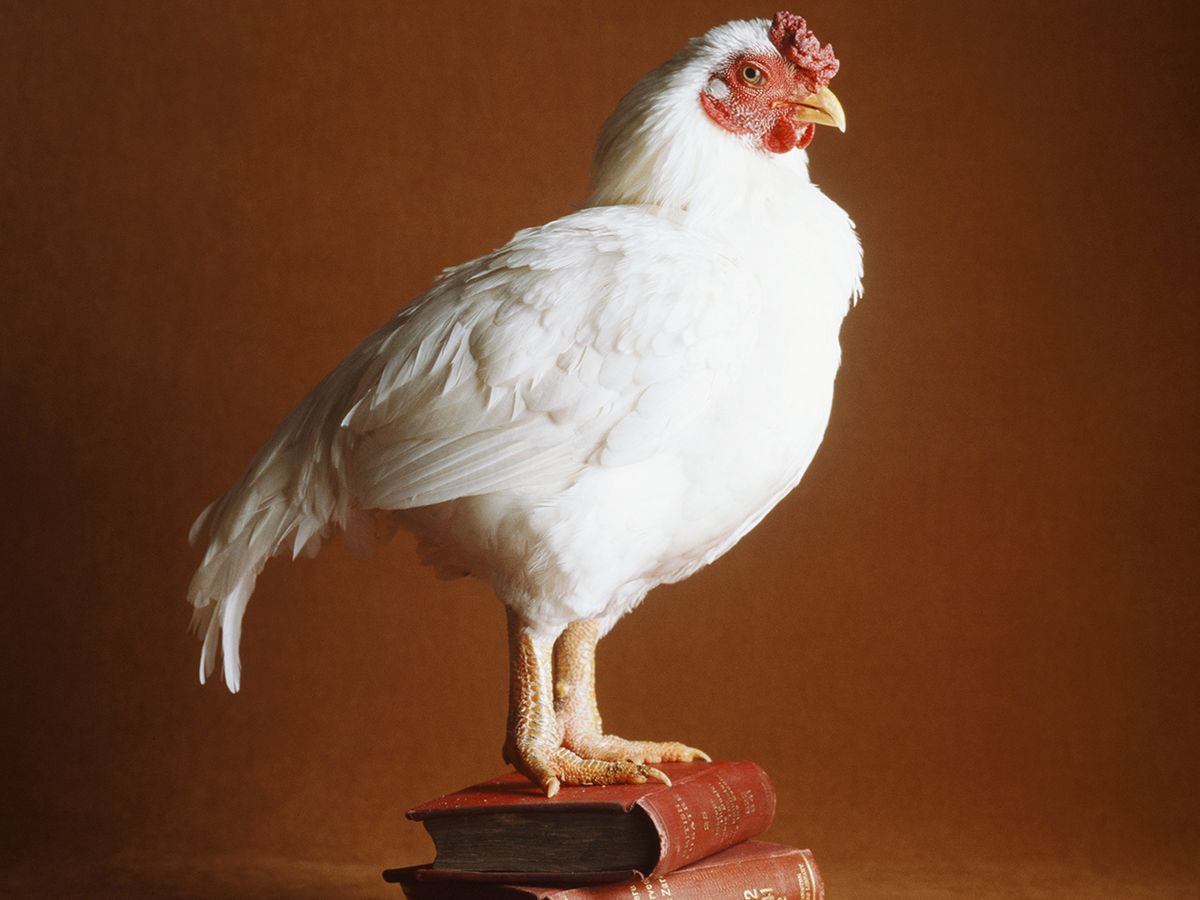For generations, beef was the United States' dominant meat, followed by pork. When annual beef consumption peaked in 1976 at about 40 kilograms (boneless weight) per capita, it accounted for nearly half of all meat. Chicken had just a 20 percent share. But chicken caught up by 2010, and in 2018 chicken's share came to 36 percent of the total, nearly 20 percentage points higher than beef. The average American now eats 30 kg of boneless chicken every year, bought overwhelmingly as cut-up or processed parts (from boneless breast to Chicken McNuggets).
The United States' constant obsession with diet, in this case the fear of dietary cholesterol and saturated fat in red meat, has been a factor in the shift. The differences, however, are not striking: 100 grams of lean beef has 1.5 grams of saturated fat, compared with 1 gram in skinless chicken breast—which actually has more cholesterol. But the main reason for chicken's ascendance has been its lower price, which reflects its metabolic advantage: No other domesticated land animal can convert feed to meat as efficiently as broilers. Modern breeding advances have had a lot to do with this efficiency.
During the 1930s, the average feeding efficiency for broilers (at about 5 units of feed per unit of live weight) was no better than for pigs. That rate was halved by the mid-1980s, and the latest U.S. Department of Agriculture's feed-to-meat ratios show that it now takes only about 1.7 units of feed (standardized in terms of feed corn) to produce a unit of broiler live weight, compared with nearly 5 units of feed for hogs and almost 12 units for cattle.
Because edible weight as a share of live weight differs substantially among the leading meat species (about 60 percent for chicken, 53 percent for pork, and only about 40 percent for beef), recalculations in terms of feeding efficiencies per unit of edible meat are even more revealing. Recent ratios have been 3 to 4 units of feed per unit of edible meat for broilers, 9 to 10 for pork, and 20 to 30 for beef. These ratios correspond to average feed-to-meat conversion efficiencies of, respectively, 15, 10, and 4 percent.
In addition, broilers have been bred to mature faster and to put on an unprecedented amount of weight. Traditional free-running birds were slaughtered at the age of one year, when they weighed only about 1 kg. The average weight of American broilers rose from 1.1 kg in 1925 to nearly 2.7 kg in 2018, while the typical feeding span was cut from 112 days in 1925 to just 47 days in 2018.
Consumers benefit while the birds suffer. They gain weight so rapidly because they can eat as much as they want while being kept in darkness and in strict confinement. Because consumers prefer lean breast meat, the selection for excessively large breasts shifts the bird's center of gravity forward, impairs its natural movement, and puts stress on its legs and heart. But the bird cannot move anyway: According to the National Chicken Council, a broiler is allotted just 560 to 650 square centimeters, an area only slightly larger than a sheet of standard A4 paper. As long periods of darkness improve growth, broilers mature under light intensities resembling twilight. This condition disrupts their normal circadian and behavioral rhythms.
On one side, you have shortened lives (less than seven weeks for a bird whose normal life span is up to eight years) with malformed bodies in dark confinement; on the other, in late 2019 you got retail prices of about US $2.94 per pound ($6.47 per kilogram) for boneless breast compared with $4.98/lb. for round beef roast and $8.22/lb. for choice sirloin steak.
But chicken's rule hasn't yet gone global: Thanks to its dominance in China and in Europe, pork is still about 10 percent ahead worldwide. Still, broilers mass-produced in confinement will, almost certainly, come out on top within a decade or two.
This article appears in the January 2020 print issue as “Why Chicken Rules."
Vaclav Smil writes Numbers Don’t Lie, IEEE Spectrum's column devoted to the quantitative analysis of the material world. Smil does interdisciplinary research focused primarily on energy, technical innovation, environmental and population change, food and nutrition, and on historical aspects of these developments. He has published 40 books and nearly 500 papers on these topics. He is a distinguished professor emeritus at the University of Manitoba and a Fellow of the Royal Society of Canada (Science Academy). In 2010 he was named by Foreign Policy as one of the top 100 global thinkers, in 2013 he was appointed as a Member of the Order of Canada, and in 2015 he received an OPEC Award for research on energy. He has also worked as a consultant for many U.S., EU and international institutions, has been an invited speaker in more than 400 conferences and workshops and has lectured at many universities in North America, Europe, and Asia (particularly in Japan).




